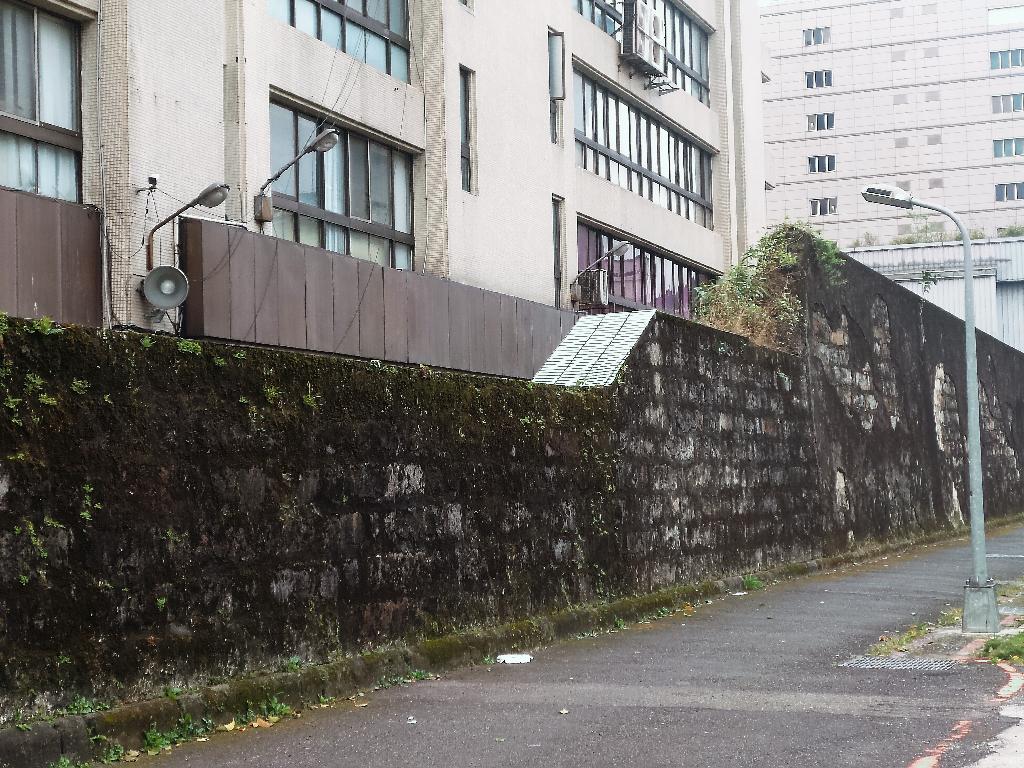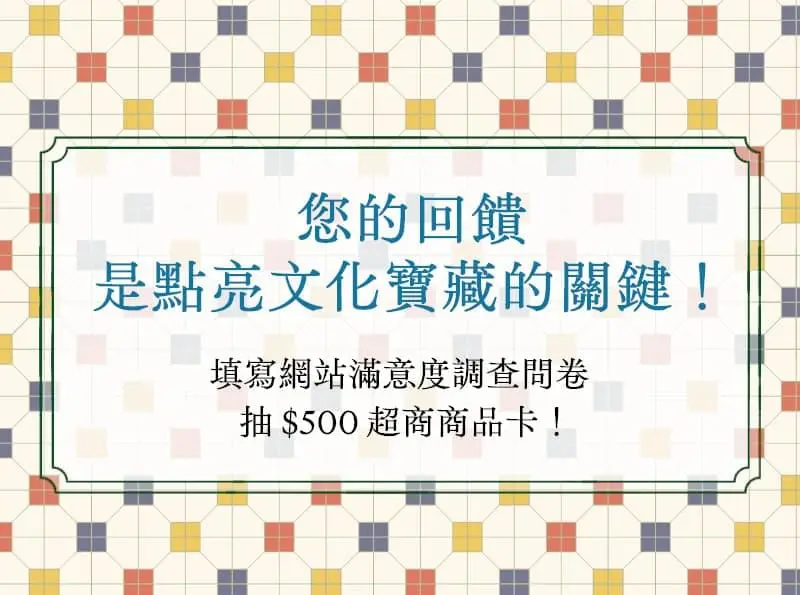Taiwan Taipei Prison
Taiwan Taipei Prison
From a Japanese-era penitentiary to a postwar prison
The history of the Taipei Prison can be dated back to the days when Taiwan was under Japanese rule. In 1895, the Japanese government remodeled a Qing-era government office (located in the Japanese period administrative district Fukuzumi-chō) and named it the Taihoku Prison of Taihoku Prefecture. Due to changes within the Japanese governmental system, the prison was later called by different names, including the Taihoku Prefectural Prison (1897) and Taihoku Prison (1900). Later, the Japanese constructed a prison modeled after the Pennsylvania system, which had radiating cell wings, outside the Dongmen area in Taipei. In 1903, the Taihoku Prison was relocated to today’s No. 52, Section 2, Jinshan South Road, Taipei City (located at the end of Aiguo East Road). After the outbreak of the Police Incident in 1923, many of the people involved, including Chiang Wei-shui, Lin Youchun and Wang Min-chuan, were imprisoned in the Taihoku Prison. In 1924, with the promulgation of Imperial Edict No. 277, the Taihoku Prison was renamed Taihoku Penitentiary.
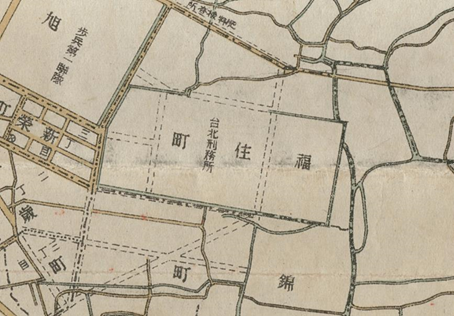 ▲ A map of Taipei City in 1927 showed the Taihoku Penitentiary located at Fukuzumi-chō. (Source: Center for GIS, RCHSS, Academia Sinica (2018). “Taiwan Historical Maps in the Last One Hundred Years.” Available at: http://gissrv4.sinica.edu.tw/gis/twhgis/)
▲ A map of Taipei City in 1927 showed the Taihoku Penitentiary located at Fukuzumi-chō. (Source: Center for GIS, RCHSS, Academia Sinica (2018). “Taiwan Historical Maps in the Last One Hundred Years.” Available at: http://gissrv4.sinica.edu.tw/gis/twhgis/)
After World War II, the Taihoku Penitentiary was renamed Taipei First Prison in October 1945, and its name was changed again to Taiwan Taipei Prison in 1948. During the 1950s large numbers of people were arrested and imprisoned for political reasons. When the prisons affiliated with the military and intelligence agencies could no longer accommodate more prisoners, these prisoners would be sent to judicial prisons for a temporary stay before being transferred again. Most of these prisoners, around a 100 people, were transferred to the Taipei Prison.
On July 1, 1952, the “Detention Center of the Taipei District Court, Taiwan,” was separated from the “Taiwan Taipei Prison.” The two institutes were both situated in the same block confined by today’s Section 2, Hangzhou South Road, Lane 30 and 31 of Section 2, Jinshan South Road, Jinhua Street and Lishui Street.

▲ An aerial image from the US Military that shows the Taihoku Penitentiary in June, 1945. The green square marked the farmland affiliated with the penitentiary; the yellow square marks the main buildings of the prison; the red square shows the government housing where the prison’s staff lived. (Source: Center for GIS, RCHSS, Academia Sinica (2018). “Taiwan Historical Maps in the Last One Hundred Years.” Available at: http://gissrv4.sinica.edu.tw/gis/twhgis/ ; frame lines added.)
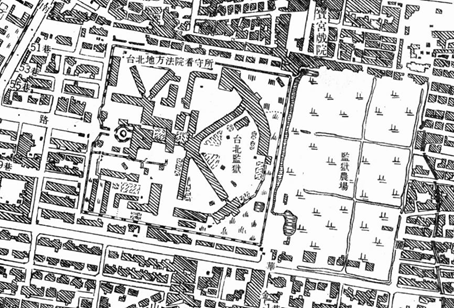 ▲ A map of Taipei City in 1958 showing the block which the Taipei Prison and the Detention Center of the Taipei District Court shared. (Source: Center for GIS, RCHSS, Academia Sinica (2018). “Taiwan Historical Maps in the Last One Hundred Years.” Available at: http://gissrv4.sinica.edu.tw/gis/twhgis/)
▲ A map of Taipei City in 1958 showing the block which the Taipei Prison and the Detention Center of the Taipei District Court shared. (Source: Center for GIS, RCHSS, Academia Sinica (2018). “Taiwan Historical Maps in the Last One Hundred Years.” Available at: http://gissrv4.sinica.edu.tw/gis/twhgis/)
In 1963, the Taiwan Taipei Prison relocated to Guishan Township, Taoyuan County (today’s No. 2, Hongde New Residential Quarter, Guishan District, Taoyuan City), and was also named Guishan Prison. As the Agency of Corrections under the Ministry of Justice was established in 2011, the full name of the Taiwan Taipei Prison was changed to “Taipei Prison, Agency of Corrections, Ministry of Justice.”
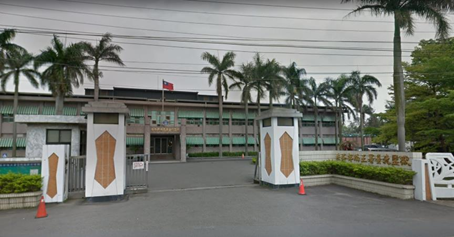
▲ This picture shows the gate of the current Taipei Prison, Agency of Corrections, Ministry of Justice, located in Guishan District, Taoyuan City. (Source: April 2017 © 2019 Google)
“Ox-cart-wheel food” and “fatty disease”
During the period when the Taiwan Taipei Prison was located on Jinshan South Road, it was under the purview of the Ministry of Judicial Administration under the Executive Yuan (the predecessor of the Ministry of Justice). The prison was divided into three parts, the detention center, the prison and the female prison respectively. Also, more than ten workshops were affiliated with the prison.
According to Chen Qin, a female prisoner in the 1950s, taking care of children in the female prison was very difficult. During shower time, every prisoner was only given a basin of cold water for showering and cleaning children’s diapers, all which had to be done in merely 15 minutes. Prisoner Huang Chi-nan [Bstated that food in the Taipei Prison was horrible. Prisoners were hungry all the time, and called their prison food “ox-cart-wheel food”:
Every lump of rice was in the shape of a hollowed circle, so it looked just like the wheel of an ox cart. It usually came with soup that contained only fermented black beans and stalks of water spinach. Other foods were pickled cucumbers or other pickled foods. We usually had no meat at all.
Prisoner Zhong Yi-jen also pointed out that the staff in the prison often took three-fifths of the prisoners’ rice, and replaced it with rotten sweet potatoes. Most prisoners suffered from malnutrition, which led to sunken eyes and skinniness. In dim light, these prisoners looked like zombies, bawling hungrily in their cells all day. Young prisoners would bribe prison guards with their clothes in exchange for clean water and salt, which they mixed and drank to alleviate hunger. Yet this would cause edema, and these prisoners would eventually contract a kidney disease they called “fatty disease.” It is said that when people died from this disease, horrible odors would leak out from their corpses. The sickroom would thus be sterilized with a thick saponated cresol solution. This shows that the environment at the time was very foul.
Remains of prison walls and to-be-renovated government housing
The main buildings, government housing and farms of the Taipei Prison, once located on Jinshan South Road, have been torn down and replaced by an office building (the present Chunghwa Telecom Southern District Taipei Office, also known as the Chunghwa Telecom Jinshan Building). Parts of the farms are now private properties or urban development areas. The only structures left today are remains of the Taipei Prison walls and the Japanese government housing on the southern side of the Taihoku Penitentiary.
The prison’s outer walls, built during the period of Japanese rule, used bricks from the outer walls of Old Taipei. Its remains are located on Lane 44, Section 2, Jinshan South Road, Da’an District, Taipei City (near the intersection of Aiguo East Road and Jinshan South Road), with only two 100-meter-long walls left.
On the Taihoku Penitentiary’s northern and southern sides originally stood Japanese-style government housing. The government housing on the southern side (the buildings on Jinhua Street and the building where the deputy warden lived) was designated as a historic site in 2013. In 2014 when the Ministry of Justice conducted a survey on cultural property, the government housing on the northern side was torn down while the southern one was to be renovated.
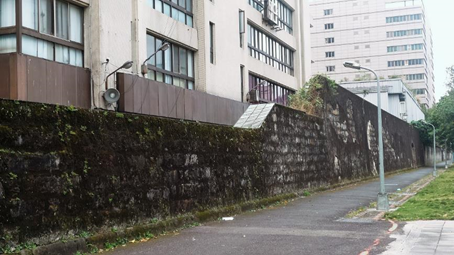
▲ The northern part of the remaining walls of the Taipei Prison can still be seen. (Photo credit: Lin Chao-Li)
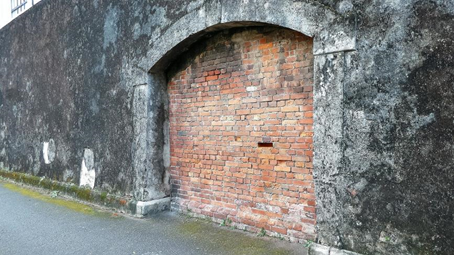
▲ The side door of the Taipei Prison was allegedly used for moving prisoners’ corpses. (Photo credit: Lin Chao-Li)
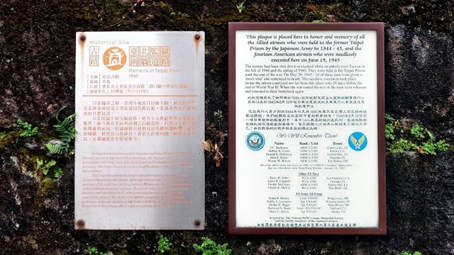 ▲ The board on the left shows information about the remains of the Taipei Prison walls, and the plaque on the right is in memory of the executed Allied and American prisoners of war. However, the boards still lack the information on the White Terror. (Photo: Lin Chao-li)
▲ The board on the left shows information about the remains of the Taipei Prison walls, and the plaque on the right is in memory of the executed Allied and American prisoners of war. However, the boards still lack the information on the White Terror. (Photo: Lin Chao-li)
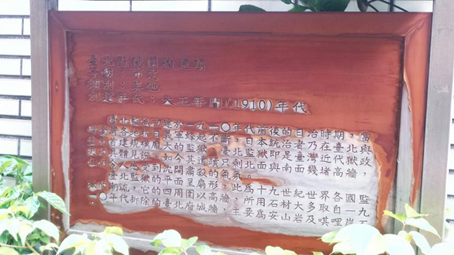
▲ This photo shows the old information board of the remains of the Taipei Prison walls. (Photo: Lin Chao-li)
基本資訊
0則留言
本網站使用Cookies收集資料用於量化統計與分析,以進行服務品質之改善。請點選"接受",若未做任何選擇,或將本視窗關閉,本站預設選擇拒絕。進一步Cookies資料之處理,請參閱本站之隱私權宣告。

